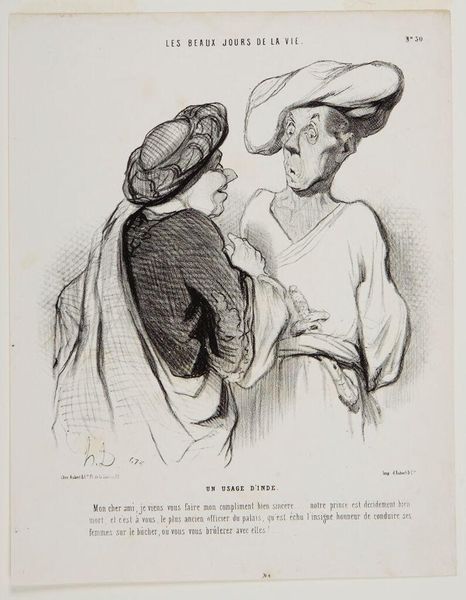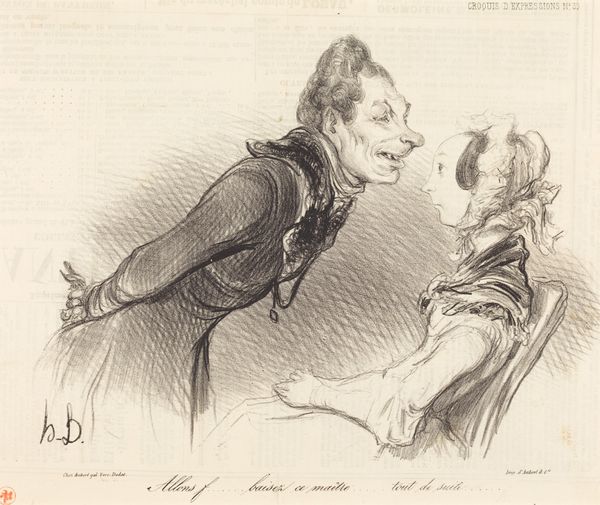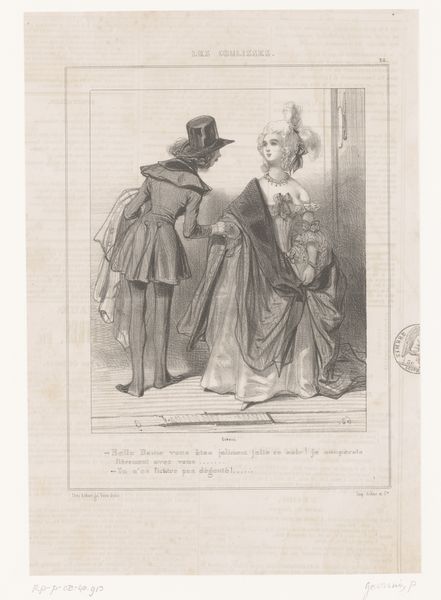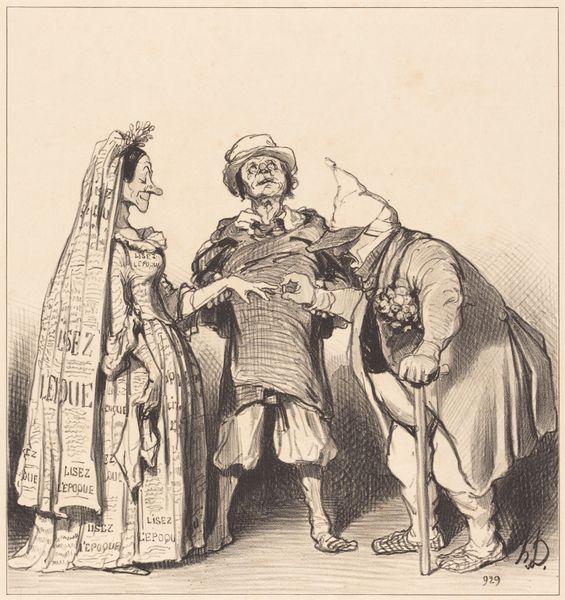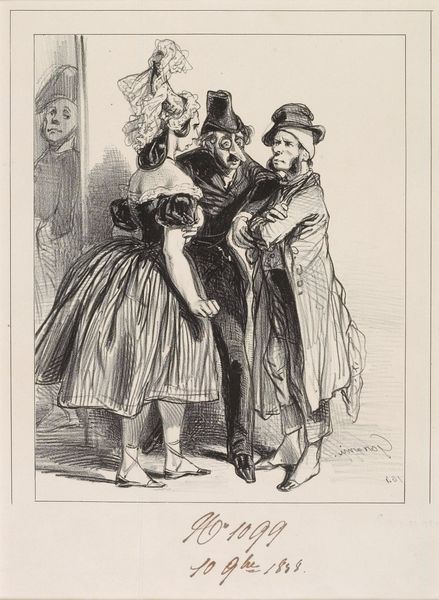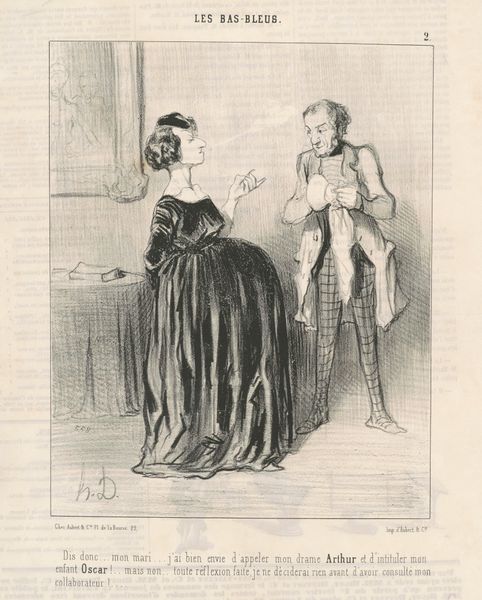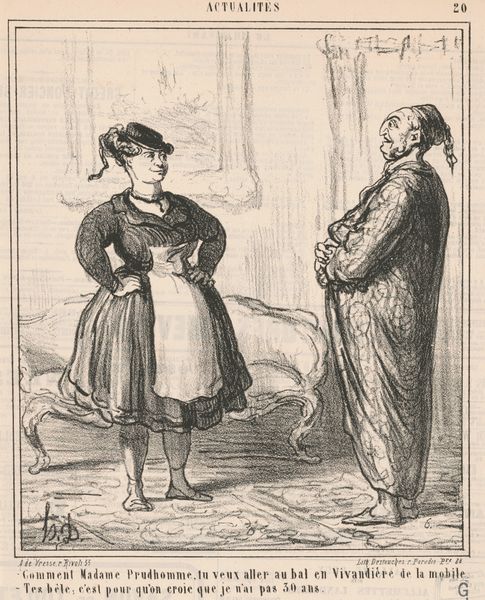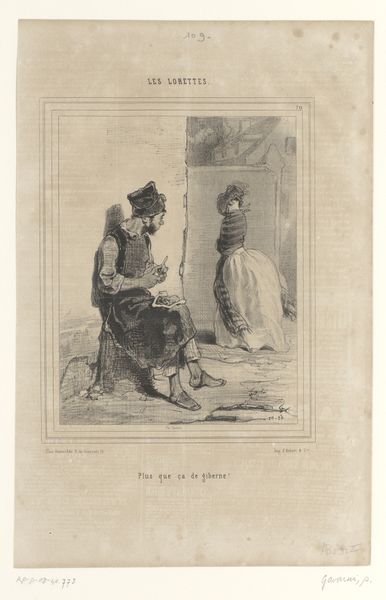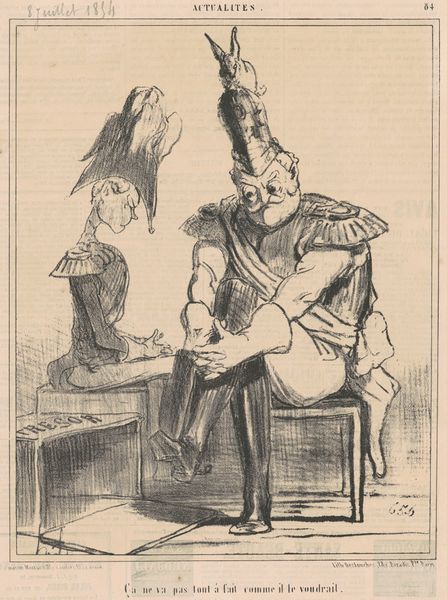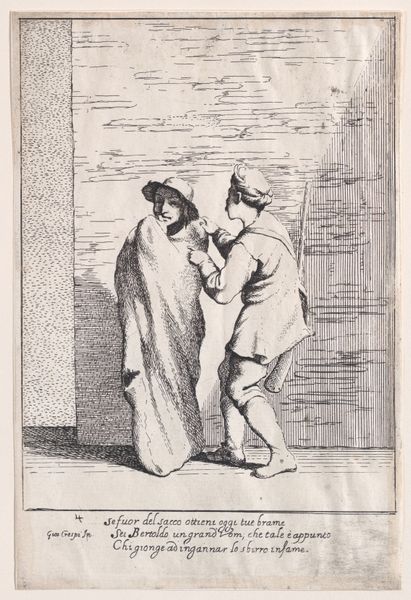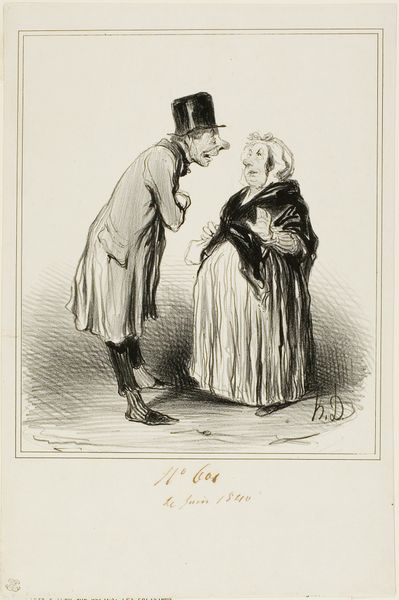
drawing, lithograph, print
#
portrait
#
drawing
#
imaginative character sketch
#
light pencil work
#
lithograph
# print
#
caricature
#
pencil sketch
#
personal sketchbook
#
idea generation sketch
#
orientalism
#
sketchbook drawing
#
portrait drawing
#
pencil work
#
storyboard and sketchbook work
#
sketchbook art
Dimensions: actual: 12 3/8 x 9 3/16 in. (31.43 x 23.34 cm)
Copyright: National Gallery of Art: CC0 1.0
Editor: Here we have Honoré Daumier's "Un Usage d'Inde," a 19th-century lithograph print. It presents two figures in what appears to be a tense conversation, maybe even an argument. Their exaggerated features lend a comical edge. What do you see in this piece that connects it to the wider cultural context? Curator: This lithograph participates in a long history of European fascination with and misrepresentation of the "Orient." Daumier's caricature plays upon the orientalist tropes prevalent in 19th-century France, where "the East" was often portrayed as exotic, despotic, and backwards. This print, with its title translating to "An Indian Custom," most likely appeared in a journal. Who might have been the imagined audience for this satirical image, and how would it shape their understanding of Indian culture? Editor: Well, I imagine the audience would have been primarily French readers familiar with the sensationalized and often inaccurate depictions of other cultures at that time, and would have perhaps been amused and titillated by these exotic caricatures. Was Daumier intentionally criticizing those perceptions or simply capitalizing on them? Curator: That's the complexity of it. Daumier, through caricature, was often a social critic, lampooning French society and its foibles. In this instance, while using stereotypes, he may also have been satirizing the French obsession with the exotic and their own colonial attitudes, perhaps subtly highlighting their ignorance and prejudices by pushing these tropes to the extreme. Consider how the placement of this work, likely within a satirical journal, contributes to the layers of meaning it contains. Editor: It's interesting to consider the possible layers of critique in what seems like a simple caricature. It reveals the complexities embedded in visual culture and how social and political contexts influenced art. Curator: Precisely. By unpacking these historical stereotypes and Daumier's place within a specific publication, we gain insight into the social role of art and the politics of representation during this period. It's crucial to understand that visual humor can be very serious.
Comments
No comments
Be the first to comment and join the conversation on the ultimate creative platform.
